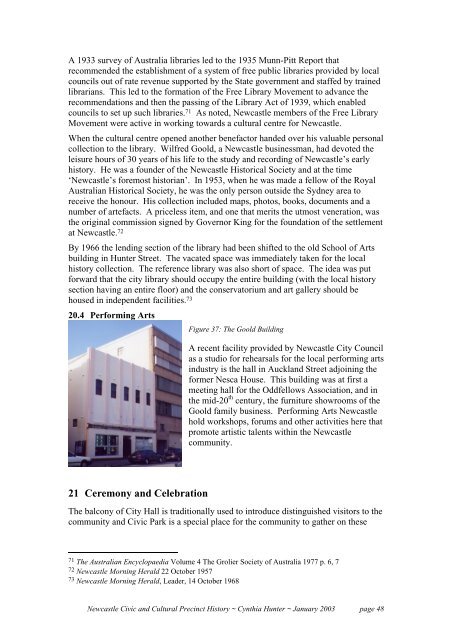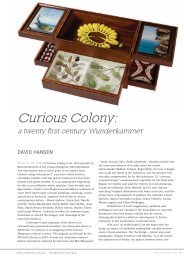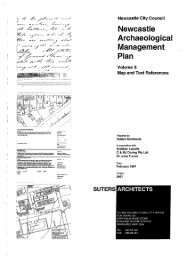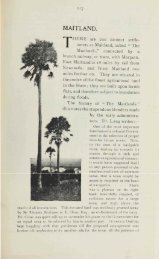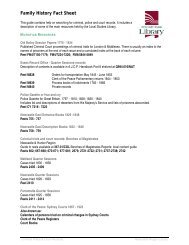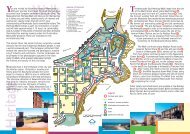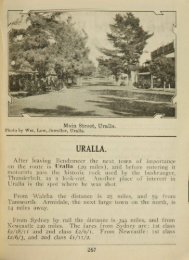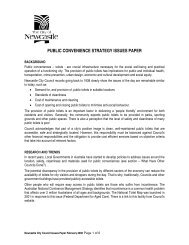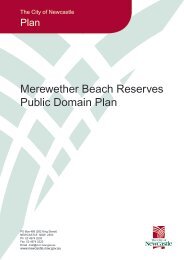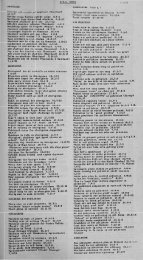Part Two – post 1920s - Newcastle City Council
Part Two – post 1920s - Newcastle City Council
Part Two – post 1920s - Newcastle City Council
Create successful ePaper yourself
Turn your PDF publications into a flip-book with our unique Google optimized e-Paper software.
A 1933 survey of Australia libraries led to the 1935 Munn-Pitt Report that<br />
recommended the establishment of a system of free public libraries provided by local<br />
councils out of rate revenue supported by the State government and staffed by trained<br />
librarians. This led to the formation of the Free Library Movement to advance the<br />
recommendations and then the passing of the Library Act of 1939, which enabled<br />
councils to set up such libraries. 71 As noted, <strong>Newcastle</strong> members of the Free Library<br />
Movement were active in working towards a cultural centre for <strong>Newcastle</strong>.<br />
When the cultural centre opened another benefactor handed over his valuable personal<br />
collection to the library. Wilfred Goold, a <strong>Newcastle</strong> businessman, had devoted the<br />
leisure hours of 30 years of his life to the study and recording of <strong>Newcastle</strong>’s early<br />
history. He was a founder of the <strong>Newcastle</strong> Historical Society and at the time<br />
‘<strong>Newcastle</strong>’s foremost historian’. In 1953, when he was made a fellow of the Royal<br />
Australian Historical Society, he was the only person outside the Sydney area to<br />
receive the honour. His collection included maps, photos, books, documents and a<br />
number of artefacts. A priceless item, and one that merits the utmost veneration, was<br />
the original commission signed by Governor King for the foundation of the settlement<br />
at <strong>Newcastle</strong>. 72<br />
By 1966 the lending section of the library had been shifted to the old School of Arts<br />
building in Hunter Street. The vacated space was immediately taken for the local<br />
history collection. The reference library was also short of space. The idea was put<br />
forward that the city library should occupy the entire building (with the local history<br />
section having an entire floor) and the conservatorium and art gallery should be<br />
housed in independent facilities. 73<br />
20.4 Performing Arts<br />
21 Ceremony and Celebration<br />
Figure 37: The Goold Building<br />
A recent facility provided by <strong>Newcastle</strong> <strong>City</strong> <strong>Council</strong><br />
as a studio for rehearsals for the local performing arts<br />
industry is the hall in Auckland Street adjoining the<br />
former Nesca House. This building was at first a<br />
meeting hall for the Oddfellows Association, and in<br />
the mid-20 th century, the furniture showrooms of the<br />
Goold family business. Performing Arts <strong>Newcastle</strong><br />
hold workshops, forums and other activities here that<br />
promote artistic talents within the <strong>Newcastle</strong><br />
community.<br />
The balcony of <strong>City</strong> Hall is traditionally used to introduce distinguished visitors to the<br />
community and Civic Park is a special place for the community to gather on these<br />
71 The Australian Encyclopaedia Volume 4 The Grolier Society of Australia 1977 p. 6, 7<br />
72 <strong>Newcastle</strong> Morning Herald 22 October 1957<br />
73 <strong>Newcastle</strong> Morning Herald, Leader, 14 October 1968<br />
<strong>Newcastle</strong> Civic and Cultural Precinct History ~ Cynthia Hunter ~ January 2003 page 48


